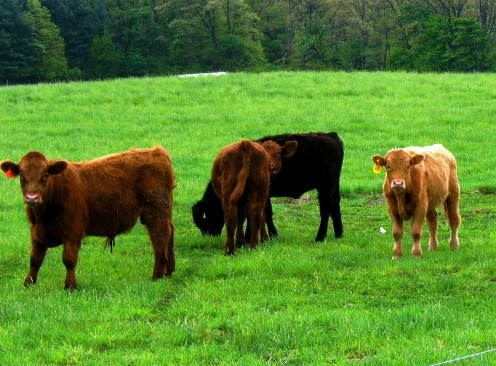
Agricultural News
Prices, Incentives and Margins in the Beef Industry
Mon, 27 Feb 2012 13:27:28 CST

It is a fact that cattle and beef prices tend to go up and down together. But, as OSU Extension Livestock Marketing Specialst Derrell Peel explains in the following analysis, it is also a fact that cattle and beef prices do not usually go up and down by the same amount and at the same time. It is this second fact that creates so much of the short term dynamics in cattle and beef markets.
Clearly, the supply pressure resulting from limited feeder cattle supplies continues to grow and has the expected impact of pushing feeder cattle prices up farther and faster than fed cattle prices, which in turn push up boxed beef prices, which then put pressure on retail prices. However, experience shows and economic theory predicts that prices adjust less and more slowly as one approaches the retail level. This always means that margins for the various sectors in the industry get squeezed for a period of time when cattle prices are rising.
The current cattle and beef market is quite unique. Cattle numbers and corresponding beef supply is creating unprecedented pressure for higher cattle and beef prices. This pressure will accelerate over the 2-3 years as anticipated herd rebuilding draws feeder supplies to even lower levels. At the same time, beef demand, which was significantly impacted negatively during the recession, is recovering but very slowly and remains sensitive to macroeconomic conditions, energy prices and other external factors. This s a recipe for very dramatic margin squeezes for some sectors of the industry. A look at each sector illustrates the general incentives and situation in 2012.
Calf prices increased roughly 21 percent last year over 2010 levels. Calf prices in early 2012 are roughly 26 percent higher than one year ago. Despite higher cow-calf cost of production, current calf prices suggest levels of cow-calf returns that are likely to stimulate heifer retention. Drought and regional forage conditions may play a big role in how much heifer retention happens in 2012 but the incentive is clearly in place.
Stocker producers saw feeder prices increase at levels similar to calf prices-about 22 percent in 2011 compared to 2010. Stocker value of gain has risen to reflect increased feedlot cost of gain and translate into increased incentives for forage based cattle production. So far in 2012 feeder prices are up slightly less than calf prices, reflecting feedlot demand for feeder cattle that is tempered somewhat by poor feedlot margins. In general, feeder prices relative to calf prices continue to offer incentives for forage based stocker programs.
Fed cattle prices increased roughly 20 percent last year over 2010 suggesting that fed prices increased almost in step with feeder and calf prices. However, feedlots also experienced a roughly 35 percent increase in feedlot cost of gain and with the combination of higher feeder prices and feed costs, feedlots experienced poor margins that will extend through much of 2012. Excess feeding capacity ensures that feedlots will continue to battle for increasingly limited feeder supplies, placing lightweight animals that require more days and more feed, and thus perpetuate poor margins. Feed costs could provide some relief if current corn production estimates are realized this year but it will not help until late in the year. Meantime, feedlots will continue to pay more than they can afford for animals that are not what they would really like to feed and will increasingly have difficulty maintaining capacity as placements fall.
Boxed beef prices in 2011 increased 16 percent on an annual average basis compared to 2010. The squeeze on packer margins is obvious when that value is compared to the 20 percent increased in fed cattle prices. By-product values were slightly weaker in 2011 as well also contributing to decreased packer margins. So far in 2012, boxed beef prices have increased roughly 10 percent compared to a 16 percent year over year increase in fed cattle meaning that the squeeze continues. Given projected feedlot breakeven values, it would take a more than 20 percent increase in boxed beef prices in 2012 to cover both feedlot and packer breakevens. This seems unlikely and these two sectors are likely to continue jockeying to limit poor margins.
Retail beef prices increased annually about 10 percent in 2011. Compared to the 16 percent increase in boxed beef prices, retail margins dropped to the lowest level in several years. Given the boxed beef price increases described above, it would take something like a 25 percent increase in retail beef prices to cover feedlot and packer breakevens and allow for a typical retail margin. Current projections for decreased per capita beef supplies suggest that an 8-10 percent retail price increase is more feasible. However, continued economic growth that improves consumer incomes could provide additional support for higher retail prices. Reduced broiler production and decreased total meat supplies, along with strong exports may help as well. Nevertheless, margins will likely continue to be squeezed for feedlots, packers and retailers as surging cattle prices push against demand limits. The heat from this pressure cooker will likely get hotter before it gets better.
Peel's report and analysis of trends in the beef market are part of the February 27th issue of the electronic newsletter, the Cow/Calf Corner.
WebReadyTM Powered by WireReady® NSI
Top Agricultural News
More Headlines...




















